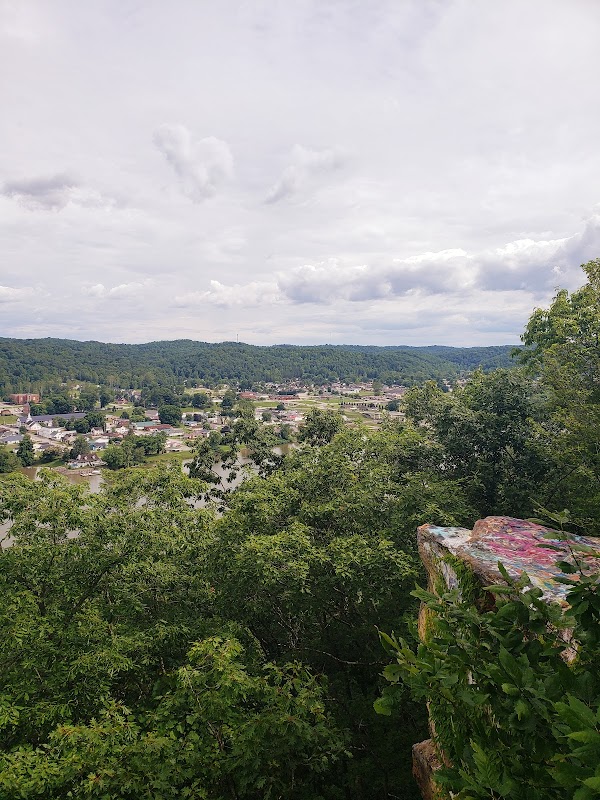
Trail Running Through the Ferns: Kanawha State Forest’s Hidden Sprint
Kanawha State Forest’s trails invite runners into an active encounter with dense ferns and rolling terrain just outside Charleston. Combining moderate elevation with shaded paths and sweeping river views, it’s a perfect blend of challenge and natural calm for trail runners of all levels.
Wear Trail-Specific Footwear
Choose shoes with strong traction and moderate cushioning to navigate wet roots and uneven terrain safely.
Pack Hydration for Longer Runs
Water sources are limited in the forest; carry enough water or a hydration pack to stay hydrated during your run.
Start Early or Late
Avoid mid-day heat and heavy foot traffic by scheduling your runs in the cooler mornings or late afternoons.
Watch Your Step
Stay alert on sections with roots and rocky patches where footing can quickly become unstable.
Trail Running Through the Ferns: Kanawha State Forest’s Hidden Sprint
Kanawha State Forest, just outside Charleston, West Virginia, offers an invigorating trail running experience that balances challenge with the lush serenity of ancient ferns brushing against your legs. The 13-mile network of trails weaves through dense hardwoods and ferns that seem to lean in, daring you to keep moving forward. The well-maintained paths hold a moderate elevation gain of about 800 feet, enough to push your lungs and legs but never slow your rhythm too much.
The ground underfoot shifts between packed dirt and soft leaf litter, interrupted by occasional roots and stones that demand focus. Elevation gains reward runners with glimpses of the Kanawha River, whose current seems to push the forest itself into life. Early morning runs let you hear the forest’s breath—the rustle of leaves and territorial calls from resident birds—each step a negotiation with a landscape fiercely itself.
Planning your run here means respecting the forest’s mood and pace. Hydration is crucial; bring water, as the reroute options and the moderate loop mean you’ll be out for around two to three hours. Trail running shoes with reliable traction will keep you steady over slippery stretches where dew or rain cling to ferns and rocks alike. Mornings and late afternoons offer the coolest window—both for temperature and for avoiding peak tourist hikers.
Though the forest welcomes all levels, the trail asks for alertness. Roots snarl and stones lurk beneath the ferns’ shade, so pace yourself where the elevation tightens. The forest won’t be conquered but engaged with, its wild spirit urging respect.
Beyond running, Kanawha State Forest reveals quiet pockets—the old stone foundation ruins, a tangled raspberry patch, or a lesser-known outlook overlooking the valley’s floodplain. These moments between pushes create balance: challenging your stamina, refreshing your senses, and rewarding your patience. For an adventurous runner with an eye for detail and respect for nature’s pace, Kanawha’s ferns offer a living classroom where every footfall matters.
Nearby Trips
All Adventures
Boat Charters
Water Activities
Adventures near Charleston, West Virginia
Discover the unique and memorable adventures that make Charleston, West Virginia special.
Frequently Asked Questions
Are the trails at Kanawha State Forest suitable for beginner trail runners?
Yes, many trails have moderate elevation and clear signage, making them accessible for beginners who maintain steady pacing and focus on footing.
Is there water available on the trail?
Permanent water sources are limited, so runners should carry their own hydration to stay properly fueled along the trail.
Can I find shaded paths for a cooler run?
Indeed, the dense forest canopy and thick ferns provide consistent shade, particularly in summer, offering relief from heat and sun exposure.
Are dogs allowed on the trails?
Yes, dogs on leash are permitted. However, runners should be mindful of ticks and local wildlife, ensuring pets stay on marked paths.
What wildlife might I encounter during a run?
Expect to see white-tailed deer, various songbirds, occasional squirrels, and, if lucky, the rustle of a shy bobcat in the undergrowth.
Are there marked trail loops or do I need to plan a custom route?
The forest features well-marked loops ranging from 3.5 to 6.5 miles, which can be combined for longer runs. Trail maps are available at the entrance.
Recommended Gear
Trail Running Shoes
Offers grip and support on wet roots, rocks, and leaf-covered stretches common throughout the forest.
Hydration Pack or Water Bottle
Staying hydrated is critical, especially during moderate to long runs without potable water access on trail.
Lightweight Layered Clothing
Helps manage variable temperatures, especially on early mornings or late afternoons when the forest cools rapidly.
Headlamp or Handheld Light
Useful for winter runs with limited daylight or if you're finishing late as shadows fall quickly among dense trees.
Local Insights
Hidden Gems
- "Old stone foundation ruins near the Black Bear trail"
- "Secluded viewpoint overlooking the Kanawha River valley off the Whispering Pines loop"
Wildlife
- "White-tailed deer"
- "Barred owls"
- "Eastern box turtles"
- "Seasonal appearances of wild turkey"
History
"Originally farmland in the early 1900s, Kanawha State Forest was reforested and developed in the 1930s by the Civilian Conservation Corps, with several stone structures remaining as artifacts."